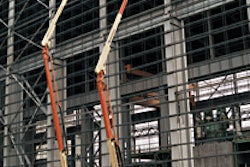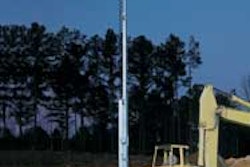By the time you read this, the U.S. population may have already hit the 300 million mark. During the nearly 30-year period it took to add another 100 million residents (and counting), we have seen substantial growth in other areas — not all of them positive. Consider that in 1967, you could buy a home for $24,600; gas cost $.33 a gallon; and a postage stamp was $.05 (U.S. Census Bureau).
Our love of motor vehicles has also risen exponentially over this period. Vehicle registrations more than doubled, from 98.9 million in 1967 to 237.2 million in 2006. Unfortunately, the Interstate Highway System — which turned 50 this year — has failed to keep pace.
The majority of the 46,572 miles making up the Interstate System were built during the 1960s and 1970s. Since then, only about 50% of the needed mileage has been added to accommodate increasing traffic levels ("The 2005 Urban Mobility Report", May 2005, Texas Transportation Institute, The Texas A&M University System).
In the period from 1990 to 2004 alone, Interstate travel expanded 51%, while capacity grew only 6%. TRIP (The Road Information Project) points out that travel is increasing at a rate eight times faster than lane miles are being added. It forecasts a further 60% increase in travel by the year 2026.
Without a dramatic increase in highway capacity, the Federal Highway Administration (FHWA) estimates that by 2020, 29% of urban National Highway System routes will be congested or exceed capacity for much of the day and 42% of these routes will be congested during peak periods. By comparison, only 10% of the routes were congested in 1998.
The cost of inadequate highway capacity is high, and rising. "The 2005 Urban Mobility Report" shows congestion in 2003 cost roughly $63.1 billion (based on wasted time and fuel) in the 85 urban areas it reviewed. An estimated 2.3 billion gallons of fuel were wasted — enough to fill 46 super tankers or 230,000 gasoline tank trucks. And a January 2006 FHWA report shows bottlenecks on highways are causing the freight transportation industry alone 243 million hours in delays annually, at a cost of nearly $8 billion per year.
Pete Ruane, president of the American Road & Transportation Builders Association, cites the root cause of highway congestion as "the failure of government at all levels to make the transportation capital investments necessary to keep pace with the mobility demands of a growing population and U.S. economy."
According to TRIP reports, if funding levels continue to increase at their current rate, the United States will spend $78 billion less than what is needed to maintain the current physical conditions and traffic levels, and $358 billion less than needed to make significant improvements in conditions and congestion through 2026.
Clearly, there is a pressing need for further federal highway dollars. As new Congressional members prepare to take their seats, the construction industry has a renewed opportunity to educate legislators and forward the cause for increased funding levels. Be prepared to speak out now, or expect to spend even more time in the future stuck in traffic.


















